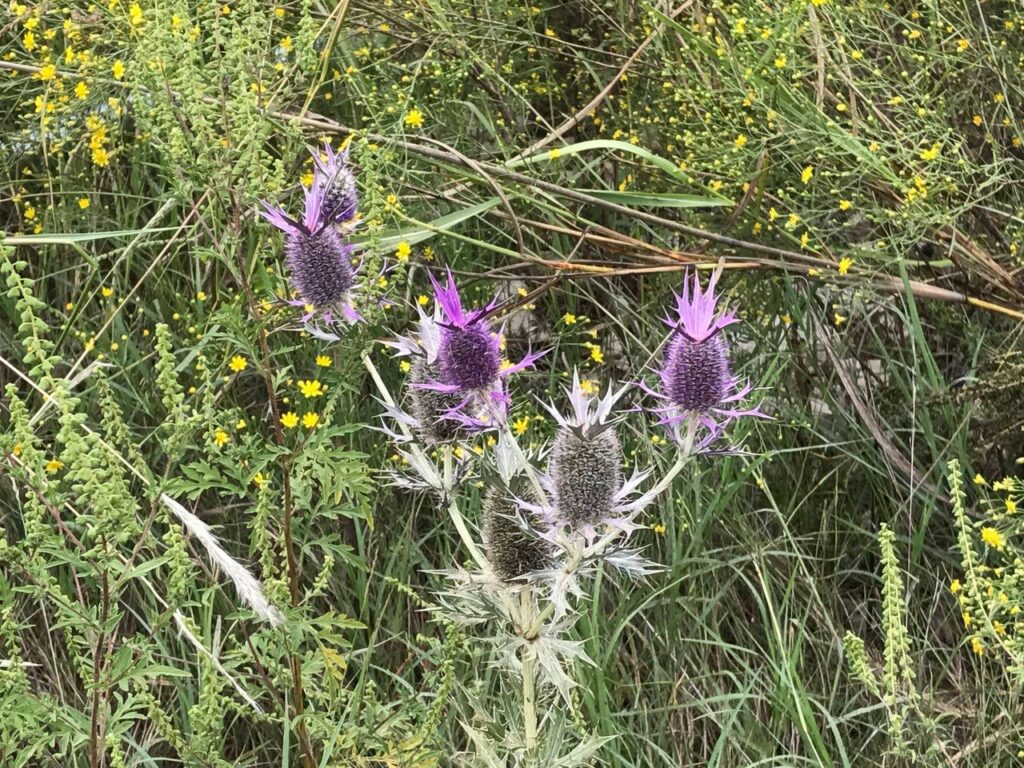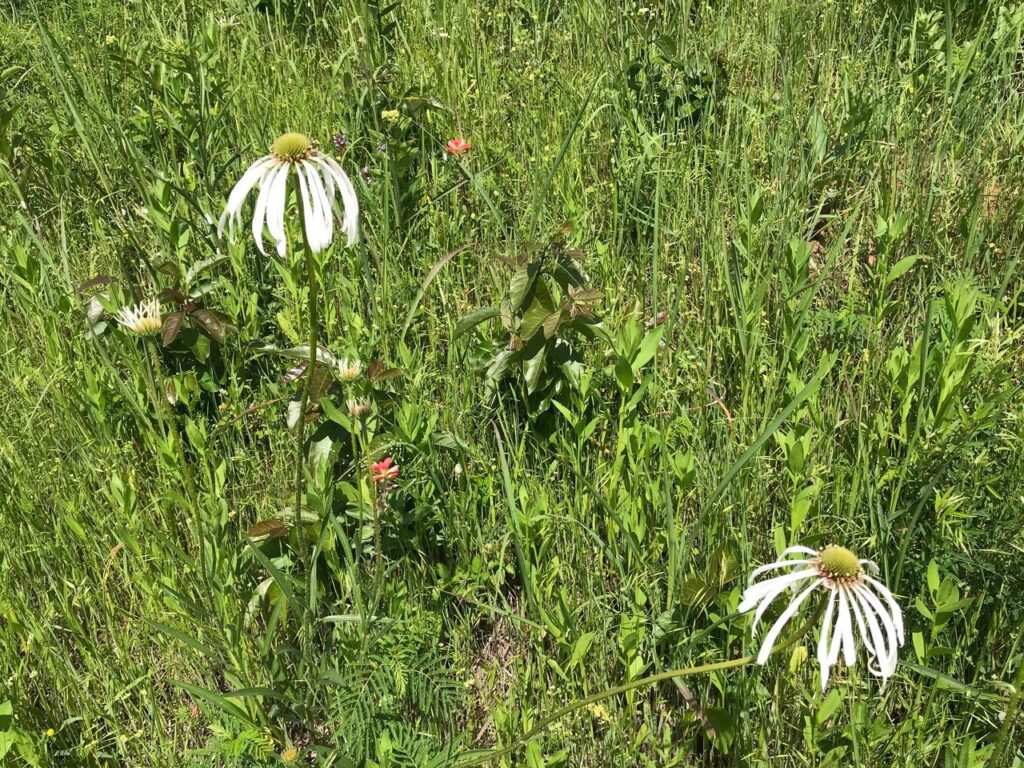
May 22, 1819. Nuttall is in the Red River valley. “The change of soil in the great Prairie of Red river now appeared obvious. It was here that I saw the first calcareous rock charged with shells, &c. since my departure from the banks of the Ohio.” (p. 172)
The Kiamichi River, south from Antlers, leaves the Ouachitas and flows though the coastal plain of Oklahoma to its junction with the Red River. As Nuttall notes, the Ouachitas and the Arkansas valley provinces have little limestone or other “calcareous” rock. The limestone rich soils of the Red River valley supported a rich and diverse prairie flora, differing from the Ouachita and Arkansas valley prairies because of it.
Nothing could at this season exceed the beauty of these plains, enamelled with such an uncommon variety of flowers of vivid tints, possessing all the brilliancy of tropical productions.” (p. 172)
Unfortunately, these tropically-brilliant prairies are no more. Agriculture and grazing have done them in. Some of the species remain, scattered here and there. At least so far, none of our exploring has found more than a few patches of prairie species in somewhat disturbed spots. I saw the pale purple coneflower (Echinacea pallida) in the photo below last Sunday, a few miles from the Kiamichi River’s junction with the Red.
The brilliant purple Leavenworth eryngium (Eryngium leavenworthii) in the first image was photographed last September and we won’t see it in bloom next week. And Nuttall did not see it either. But to me it perfectly fits with his tropical brilliance description of these prairies. The Dyck Arboretum (Kansas) website describes this species as “The Wildly Attractive Leavenworth Eryngo.”
“During the last week, the stunningly-brilliant display of blooming Leavenworth eryngo (Eryngium leavenworthii) near the Dyck Arboretum Visitor Center has been extremely eye-catching. Given the number of attracted pollinators, I have to wonder if Leavenworth eryngo doesn’t look to them like a neon lights spectacle similar to what we might observe at the night time Las Vegas Strip.On two plants of blooming Leavenworth eryngo (also appropriately called purple pineapple), I have seen butterflies (18 painted ladies at once!), moths, bees, bumblebees, flies, crab spiders, soldier bugs, ants, grasshoppers, and a variety of beetles. The color and nectar combination of this plant must be simply irresistible to pollinators.” http://dyckarboretum.org/wildly-attractive-leavenworth…/

